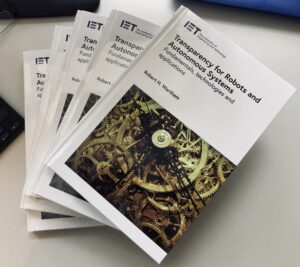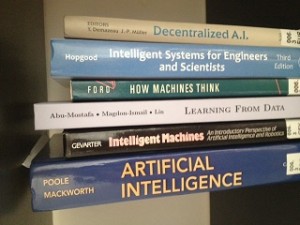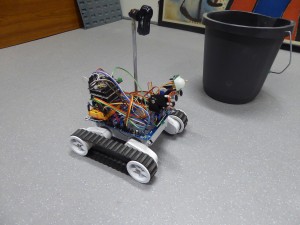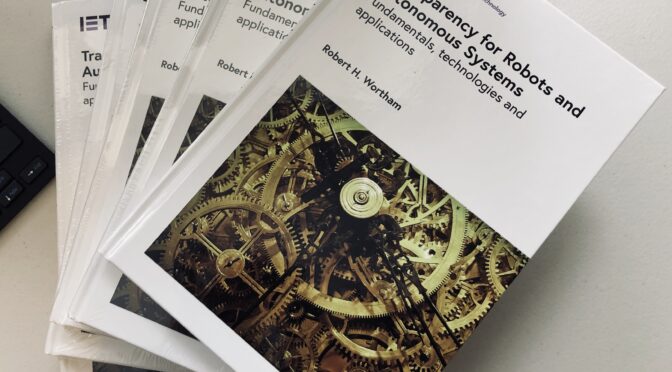
Latest Book
My recent book, published by IET:
Wortham, Robert H., Transparency for Robots and Autonomous Systems: Fundamentals, Technologies and Applications, The Institution of Engineering and Technology, 2020
ISBN-13: 978-1-78561-994-6 (eBook ISBN: 978-1-78561-995-3)
DOI: 10.1049/PBCE130E
Papers
All my research output is available on the University of Bath Research Portal. Also see Google Scholar. My PhD dissertation is available to download here, and my code repository is available on GitHub.
Other Publications
- Wortham, R. H. & Bryson, J. J., Communication, In: Living Machines: A Handbook of Research in Biomimetic and Biohybrid Systems. Prescott, T. J., Lepora, N. & Verschure, P. F. M. J. (eds.). Oxford, U. K.: Oxford University Press, p. 312-326, Apr 2018
- Wortham, R.H. (2015), AISB Book Review - In Our Own Image. In AISB Quarterly No143, June 2016, AISB.
Media
- TEDxBath - Will robots be our new best friends?, Sept 2018
- Article - How to design trustworthy robot butlers that we won’t want to treat like humans, May 2016, The Conversation
- Film - The Age of AI, Danni Zhang, October 2015, YouTube
- Also see further details of media and public engagement here.
Research Overview

My main research interests are in autonomous robotics and their application in domestic or near-domestic environments. This includes both the design and application of intelligent systems technologies to achieve goal directed autonomy, but also the practical and ethical issues surrounding human-robot interaction (HRI).
My PhD supervisors were Dr. Joanna J. Bryson (Dept of Computer Science, University of Bath) and Dr. Pejman Iravani (Dept of Mechanical Engineering, University of Bath). I remain an affiliate of the AmonI research group at Bath, lead by Joanna Bryson. Other members of the group include Andreas Theodorou, Holly Wilson and Alexandros Rotsidis.
I'm particularly interested in the various means by which we create intelligent artefacts, essentially the tools and technologies we develop in order to create artificial intelligence. Having created these new kinds of intelligent machines, I'm then subsequently interested in how humans interact with them, and what the consequences of ubiquitous artificial intelligence will be for us all. How will we live with AI, who will benefit and who will suffer? What are the risks? Should we specifically regulate the creation and deployment of AI? What can we do to enable us to use these artefacts successfully whilst minimising risk.
Instinct Planner
 The Instinct Planner is a renew biologically inspired reactive planner, based on an established behaviour based robotics methodology and its reactive planner component — the POSH planner implementation. However, it includes several significant enhancements to facilitate plan design and runtime debugging. It has been specifically designed for low power processors and has a tiny memory footprint. Written in C++, it runs efficiently on both ARDUINO (ATMEL AVR) and MICROSOFT VC++ environments and has been deployed within a low cost maker robot to study AI Transparency. Plans may be authored using a variety of tools including a promising visual design language iVDL, currently implemented using the DIA drawing package.
The Instinct Planner is a renew biologically inspired reactive planner, based on an established behaviour based robotics methodology and its reactive planner component — the POSH planner implementation. However, it includes several significant enhancements to facilitate plan design and runtime debugging. It has been specifically designed for low power processors and has a tiny memory footprint. Written in C++, it runs efficiently on both ARDUINO (ATMEL AVR) and MICROSOFT VC++ environments and has been deployed within a low cost maker robot to study AI Transparency. Plans may be authored using a variety of tools including a promising visual design language iVDL, currently implemented using the DIA drawing package.
Robot Transparency, Trust and Usefulness
As robot reasoning becomes more complex, debugging becomes increasingly hard based solely on the observable behaviour of the robot, even for robot designers and technical specialists. Similarly, non-specialist users also find it hard to create useful mental models of robot reasoning solely from observed behaviour. Robots are intrinsically hard to understand.
The EPSRC Principles of Robotics mandate that our artefacts should be transparent, but what does this mean in practice, and how does transparency affect both trust and utility (that is, usefulness or effectiveness)? When we investigate this relationship in the literature we find it to be complex, particularly in non industrial environments where transparency may have a wider range of effects on trust and utility depending on the application and purpose of the robot.
I remain engaged in long term programme of research to support the idea that it is possible to create transparent agents that are functional and emotionally engaging despite having a transparent machine nature.

